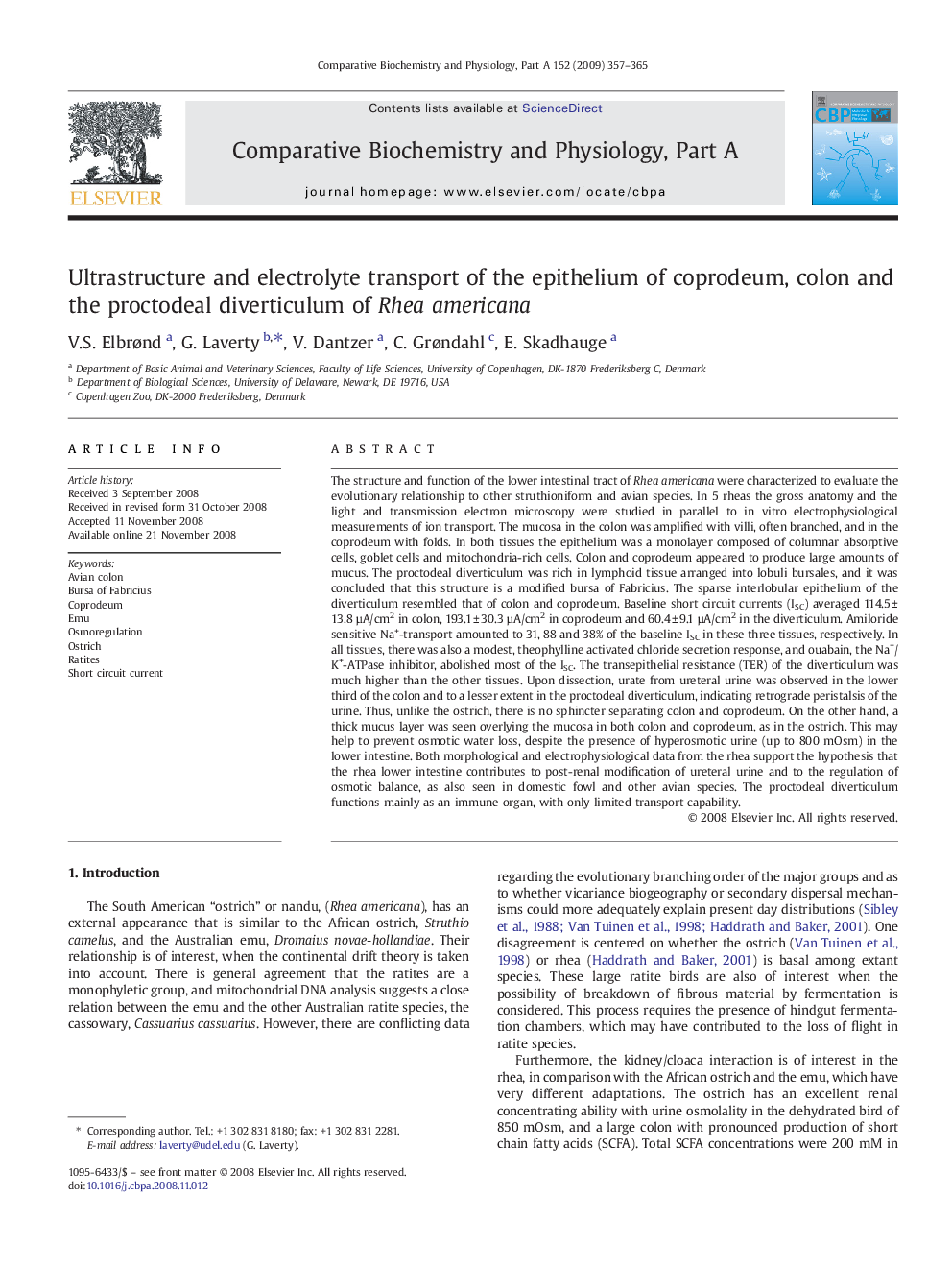| کد مقاله | کد نشریه | سال انتشار | مقاله انگلیسی | نسخه تمام متن |
|---|---|---|---|---|
| 1973472 | 1060318 | 2009 | 9 صفحه PDF | دانلود رایگان |

The structure and function of the lower intestinal tract of Rhea americana were characterized to evaluate the evolutionary relationship to other struthioniform and avian species. In 5 rheas the gross anatomy and the light and transmission electron microscopy were studied in parallel to in vitro electrophysiological measurements of ion transport. The mucosa in the colon was amplified with villi, often branched, and in the coprodeum with folds. In both tissues the epithelium was a monolayer composed of columnar absorptive cells, goblet cells and mitochondria-rich cells. Colon and coprodeum appeared to produce large amounts of mucus. The proctodeal diverticulum was rich in lymphoid tissue arranged into lobuli bursales, and it was concluded that this structure is a modified bursa of Fabricius. The sparse interlobular epithelium of the diverticulum resembled that of colon and coprodeum. Baseline short circuit currents (ISC) averaged 114.5 ±13.8 µA/cm2 in colon, 193.1 ± 30.3 µA/cm2 in coprodeum and 60.4 ± 9.1 µA/cm2 in the diverticulum. Amiloride sensitive Na+-transport amounted to 31, 88 and 38% of the baseline ISC in these three tissues, respectively. In all tissues, there was also a modest, theophylline activated chloride secretion response, and ouabain, the Na+/K+-ATPase inhibitor, abolished most of the ISC. The transepithelial resistance (TER) of the diverticulum was much higher than the other tissues. Upon dissection, urate from ureteral urine was observed in the lower third of the colon and to a lesser extent in the proctodeal diverticulum, indicating retrograde peristalsis of the urine. Thus, unlike the ostrich, there is no sphincter separating colon and coprodeum. On the other hand, a thick mucus layer was seen overlying the mucosa in both colon and coprodeum, as in the ostrich. This may help to prevent osmotic water loss, despite the presence of hyperosmotic urine (up to 800 mOsm) in the lower intestine. Both morphological and electrophysiological data from the rhea support the hypothesis that the rhea lower intestine contributes to post-renal modification of ureteral urine and to the regulation of osmotic balance, as also seen in domestic fowl and other avian species. The proctodeal diverticulum functions mainly as an immune organ, with only limited transport capability.
Journal: Comparative Biochemistry and Physiology Part A: Molecular & Integrative Physiology - Volume 152, Issue 3, March 2009, Pages 357–365